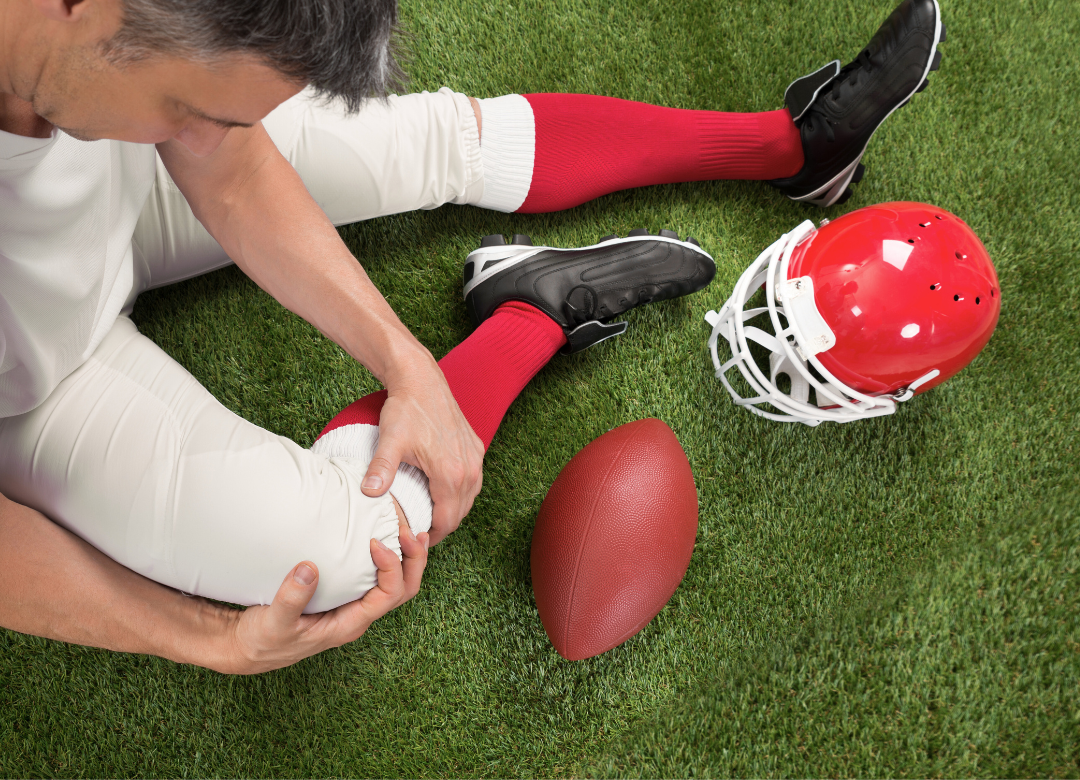
Understanding Your Knees: How to Keep Them Strong and Healthy
Knee pain or injury is one of the most common complaints among athletes and active adults. Whether you’re a runner, weightlifter, weekend warrior, or just someone who enjoys staying active, your knees play a crucial role in almost everything you do. The last thing you want is for knee issues to sideline you from your favorite activities or limit you in your daily tasks.
In this blog, we’ll break down the basics of knee anatomy, how your knees move, common knee problems, and why taking care of your knees is essential for both everyday function and high-performance activities.
1. Knee Anatomy: The Building Blocks of Your Knees
Think of your knee as a hinge joint that connects your thigh bone (femur) to your shin bone (tibia). It’s designed to bend and straighten with minimal rotation, while providing stability and absorbing forces. Several key structures work together to keep your knee functioning properly:

- Bones: The femur, tibia, and patella (kneecap) are the primary players.
- Ligaments: The ACL, PCL, MCL, and LCL act like strong ropes that keep your knee stable and prevent excessive movement in specific directions.
- Meniscus: These C-shaped cartilage pads act as shock absorbers, reducing stress between the femur and tibia.
- Tendons and Muscles: The quadriceps and hamstrings control knee movement, while the patellar tendon connects the kneecap to the shinbone. These are important to keep strong to maintain a healthy joint.
- Joint Capsule and Synovial Fluid: These help lubricate and protect the joint, ensuring smooth motion. With every knee motion, nutrients flow through the joint.
Each of these structures plays a critical role in keeping your knee stable, strong, and healthy.
2. Knee Biomechanics: How Your Knees Move and Function
Now that we know the parts, let’s talk about how they work together. The knee moves primarily in two ways:
- Flexion and Extension: Bending and straightening the knee, which happens in movements like climbing stairs, squatting, jumping, and running.
- Rotation and Stability: The knee has a small degree of medial and lateral rotation, allowing for proper movement and the knee and ankle for the appropriate force distribution throughout the leg during activities like jumping, pivoting, or cutting in sports.
Your knees handle a lot of stress daily. Whether you’re walking, climbing stairs, or lifting weights, your knees are constantly absorbing and distributing energy throughout your lower body. If any of the muscles supporting your knee (quadriceps, hamstrings, glutes, and calves) are weak or imbalanced, it can lead to excessive strain on the knee joint, increasing the risk of injury.
3. Common Knee Ailments: Why Your Knees Might Be Hurting
Knee pain can be a result of a variety of causes, whether it’s from under-preparedness, poor movement patterns, or an acute injury. Here are some of the most common knee issues active adults face:
- Patellofemoral Pain Syndrome (Runner’s Knee): This occurs when the kneecap doesn’t track properly on the bottom end of the femur, leading to pain in the front of the knee, especially during activities like squatting or descending stairs.
- Meniscus Tears: Often caused by sudden twisting motions when jumping, running, and changing direction. Meniscus tears can result in swelling, stiffness, and difficulty fully extending the knee. Meniscus tears often do well without surgical intervention.
- Ligament Injuries (ACL, MCL, PCL, LCL Tears): These injuries are common in high-intensity sports and can range from mild sprains to complete tears requiring surgery. ACL tears is commonly a non-contact injury.
- Osteoarthritis: A degenerative process where cartilage wears down over time, leading to stiffness and discomfort, especially in older adults.
- Tendinitis and Bursitis: Inflammation of tendons or bursae (fluid-filled sacs) can cause knee pain, particularly with repetitive movements like jumping or running.The most common tendon issue in the knee is Patella Tendinitis (Jumper’s Knee).
Understanding what might be the root cause of your knee pain is the first step toward healing it and feeling better. But even if you don’t have knee pain now, keeping your knees strong and healthy can significantly reduce future issues.
4. The Importance of Knee Health: Daily Activities & High-Performance Sports
Knee health is about more than just avoiding injury—it’s about optimizing movement consistently, strength, and longevity so you can keep doing what you love for as long as you want. Here’s why taking care of your knees is crucial:
Everyday Activities
Even simple daily movements like getting out of a chair, walking, or climbing stairs require healthy knees. If your knees are weak or in pain, these tasks become much harder. Strengthening your knees helps maintain independence and mobility as you age.
Strength Training & Sports Performance
If you’re into lifting, running, or playing sports, your knees take on even greater demands. Strength training plays a huge role in building resilient knees by:
- Building Strong Muscles: A well-balanced strength program that targets the quads, hamstrings, glutes, and calves can reduce excessive stress to the knee.
- Enhancing Joint Stability: Single-leg strength exercises such as lunges, step-ups, plyometrics, and balance training improve knee stability, reducing the risk of ligament and meniscus injuries.
- Improving Movement Mechanics: Poor squat or running form combined with weakness can overload the knees. Learning proper movement patterns ensures that force is evenly distributed across your joints.
How to Keep Your Knees Healthy
Here are some key tips to maintain strong, pain-free knees:
.png?width=339&height=286&name=Untitled%20design%20(3).png)
- Strengthen Your Legs: Focus on lower-body exercises like squats, lunges, step-ups, plyometrics, and deadlifts.
- Improve Mobility & Flexibility: Perform movements that take your quads, hamstrings, and calves through a full range of motion regularly to maintain muscle extensibility. If you don’t use it, you will lose it.
- Train Your Core & Glutes: A strong core and glute muscles help your lower body efficiency to keep healthy knees.
- Avoid Progressing TOO Fast & Poor Mechanics: Listen to your body and don’t progress to an intensity, distance, or duration your body is not prepared for. When you properly progress exercises it is easier to maintain proper form during workouts.
- Recover Properly: Don’t neglect rest, sleep, a nutritious diet, stress management, and mobility work to keep your knee happy.
Final Thoughts
Your knees are one of the most important joints in your body when it comes to daily movement, sports, exercise, and overall function. Whether you’re dealing with knee pain or just want to keep your knees strong for years to come, taking a proactive approach with strength training, mobility work, and recovery is key.
If you’re a Tampa athlete or active adult experiencing knee pain that’s limiting your performance or daily life, don’t ignore it! Addressing the issue early with a tailored rehab plan, training modifications, and expert guidance can prevent long-term problems.
If you need help with your knee health, whether it’s injury prevention, rehab, or performance training, we at Crossover Physical Therapy and Performance are here for you. Let’s keep you strong, active, and pain-free so you can keep doing what you love!
.png?width=277&height=200&name=Untitled%20design%20(5).png)
In Tampa and need a personalized plan to keep your knees in top shape? Reach out to us at Crossover Physical Therapy and Performance for expert guidance!



